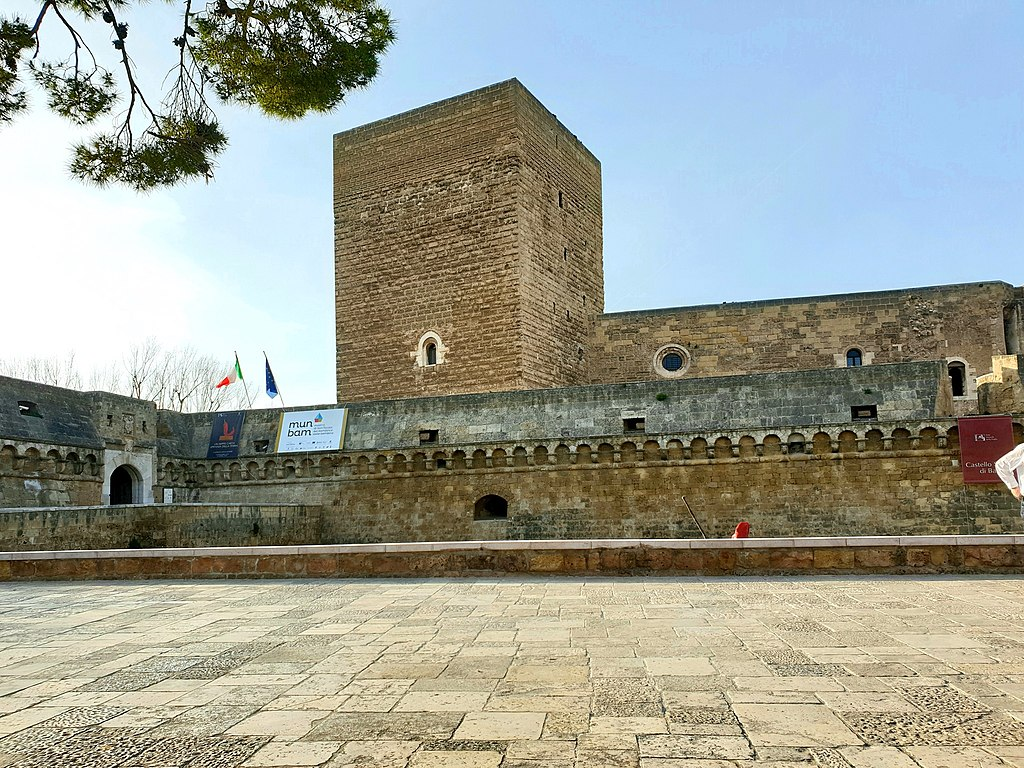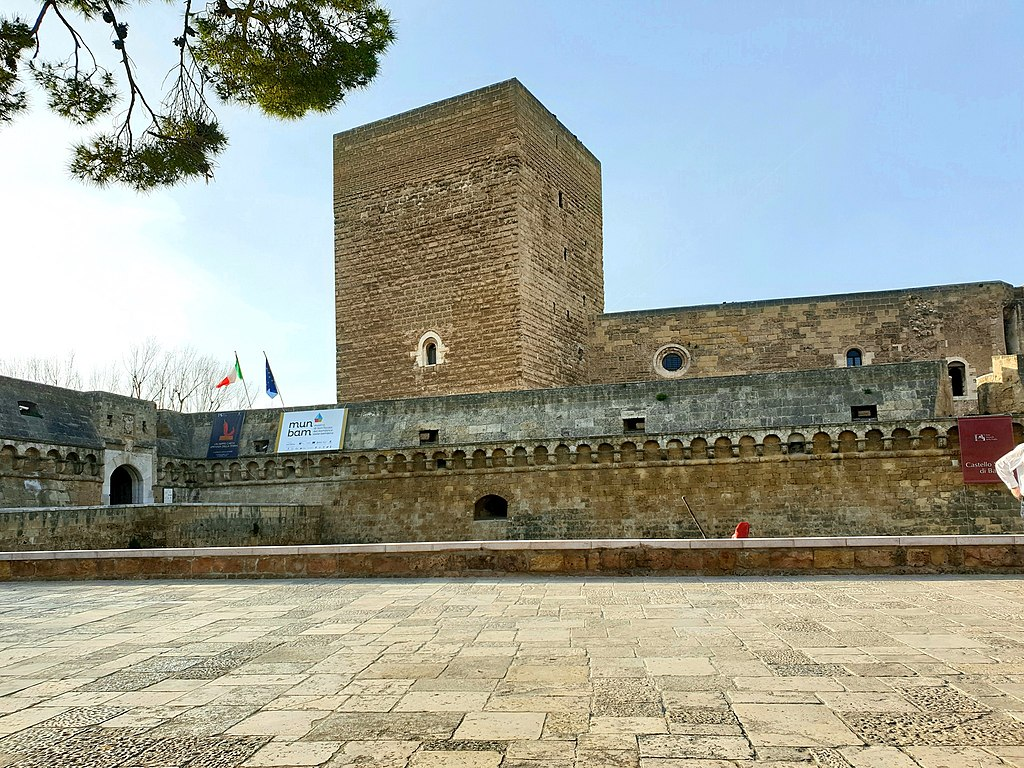
Il Castello Svevo
Il Castello Svevo di Bari, con la sua poderosa e severa mole, sorge all’estremo margine della città vecchia, dove un tempo fungeva da perno dell’antica cinta muraria.

Bari, Castello Svevo (foto di Carlo Dani – Opera propria, CC BY-SA 4.0, https://commons.wikimedia.org/w/index.php?curid=77189036)
Il castello di Bari è un maniero che, come in un gioco di scatole cinesi, ne contiene al suo interno almeno altri due. Evidenze archeologiche hanno infatti mostrato la presenza di strutture difensive di epoca romana, sui cui resti fu edificato un Kastron bizantino e altri edifici con funzioni abitative. In questo sito fu Ruggero II di Sicilia, nel 1130, ad ordinare a maestranze saracene di innalzare il castello. I baresi non amarano mai questo luogo, simbolo così evidente del potere regio, ed infatti, più volte, fu demolito dalla popolazione nel corso dei secoli. Con l’arrivo degli Svevi, e con la politica di incastellamento voluta dall’imperatore Federico II, nella prima metà del XIII secolo, fu recuperato l’impianto difensivo normanno, gravemente danneggiato nel corso delle ribellioni popolari del secolo precedente. Il possente quadrilatero, a pianta trapezioidale munito di torri angolari realizzate a bugne, fu ingentilito da monofore e bifore e da un meraviglioso portale di gusto gotico-federiciano, scolpito con figure antromorfe e zoomorfe, motivi mitologici e simboli chiaramente araldici, ispirati all’iconografia imperiale. Sul concio della chiave di volta campeggia un’aquila che serra tra i suoi artigli un leoncino, simbolo ricorrente nell’architettura federiciana.
A questa stessa epoca e sensibilità estetica, risale anche il vestibolo, cui si accede superato il portale. Questo ambiente presenta una copertura con volte a crociera, sorrette da colonne e paraste dai capitelli finemente scolpiti: un mondo di pietra in cui il naturalismo gotico federiciano convive con suggestioni islamiche. È noto che tra le maestranze al servizio dell’imperatore ci fossero molti artisti, artigiani e scalpellini arabi. Proprio nel castello barese, a testimonianza del melting-pot culturale promosso dal sovrano svevo, lavorò, insieme ai lapicidi Finarro di Canosa e Mele da Stignano, un certo Ismael, che ha lasciato la sua firma su uno dei capitelli.
Agli Svevi succedettero gli Angioini che vollero restaurare la zona nord del castello e le sale di rappresentanza, nonostante ciò i nuovi sovrani non soggiornarono mai in questa dimora, che rimase abbandonata sino all’arrivo, nel 1524, di Isabella Sforza e sua figlia Bona. Sono loro le vere signore del castello, che ne fecero una lussuosa dimora rinascimentale, circondata da una rinnovata cinta muraria. All’interno, loggiati, scale, saloni e affreschi abbellirono la severa struttura fortilizia. Con la morte di Bona Sforza, il castello di Bari non ha più conosciuto fasi di splendore, ma fu lasciato cadere in rovina.
Il castello Svevo non è solo un edificio dal grande pregio storico e architettonico, ma tra le sue antiche mura riecheggiano ancora le storie legate a un leggendario incontro tra San Francesco e Federico II. Non suffragato da alcun documento, è infatti l’episodio che racconta di come, proprio nelle stanze del maschio barese, l’imperatore Federico II sottopose il poverello d’Assisi alla prova della tentazione della carne.
